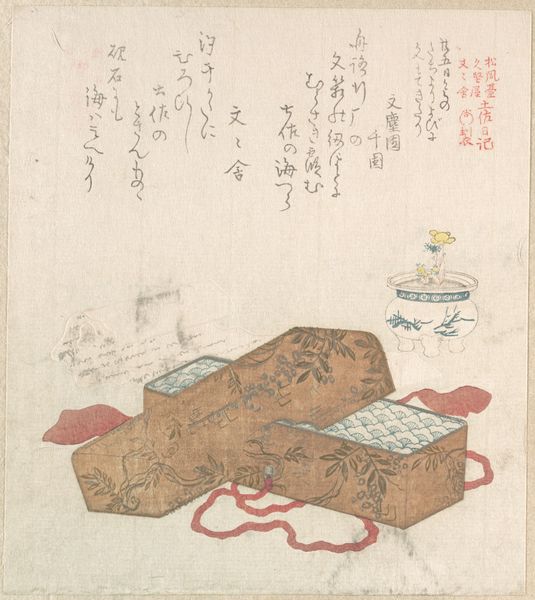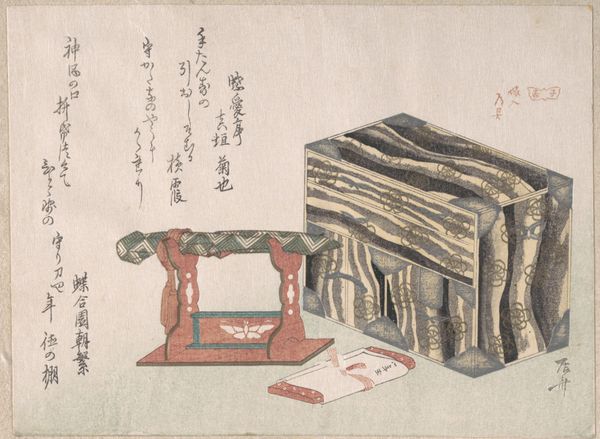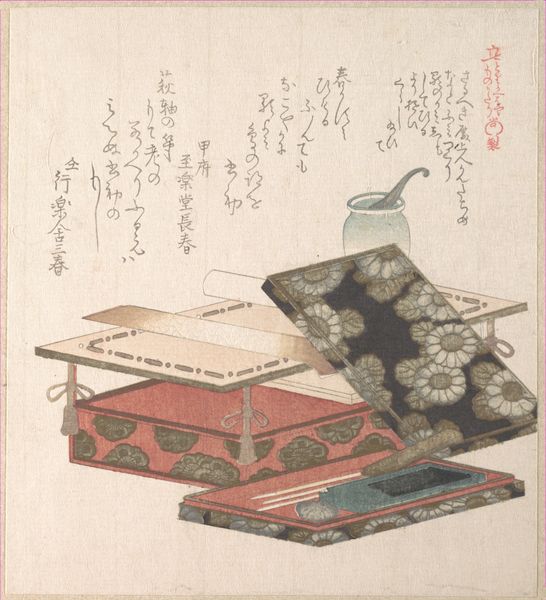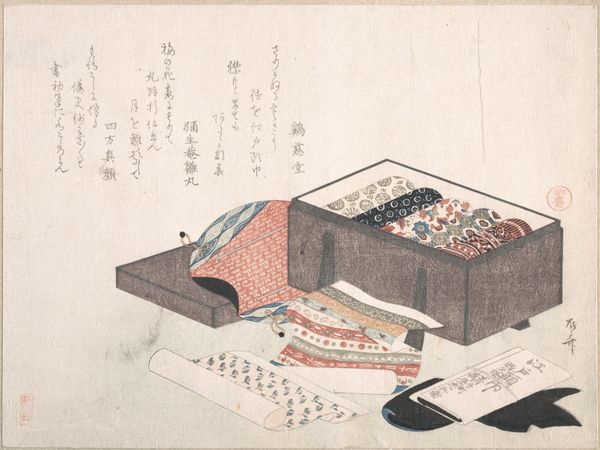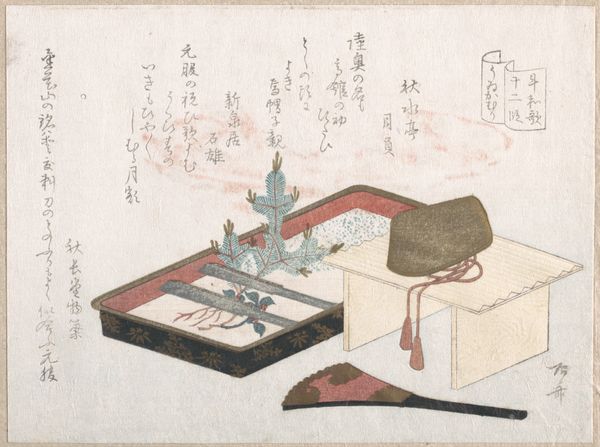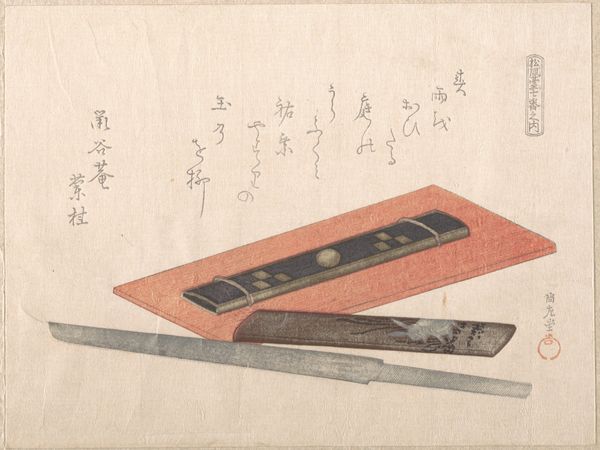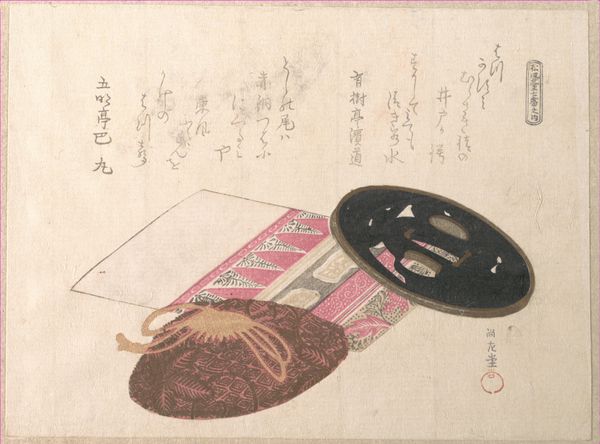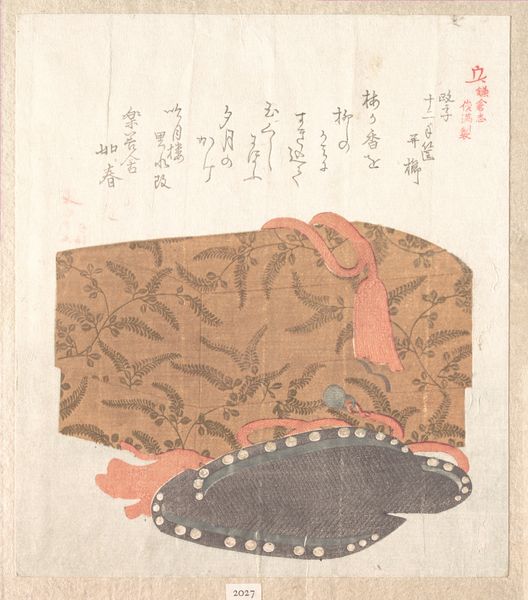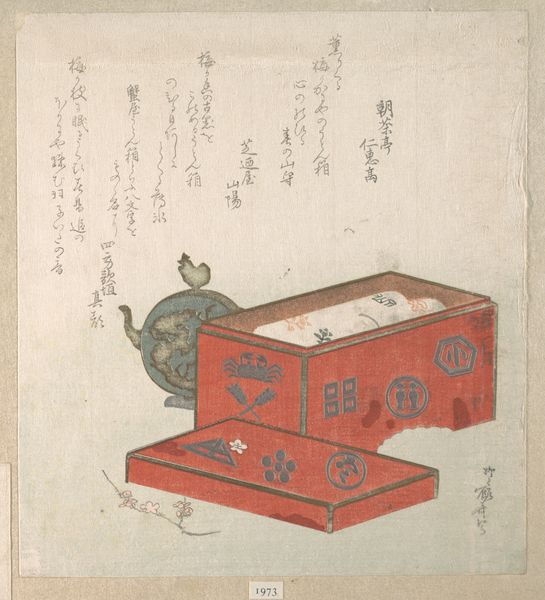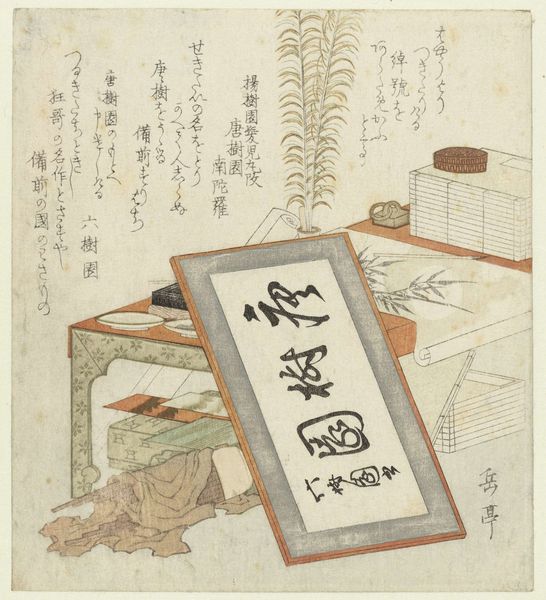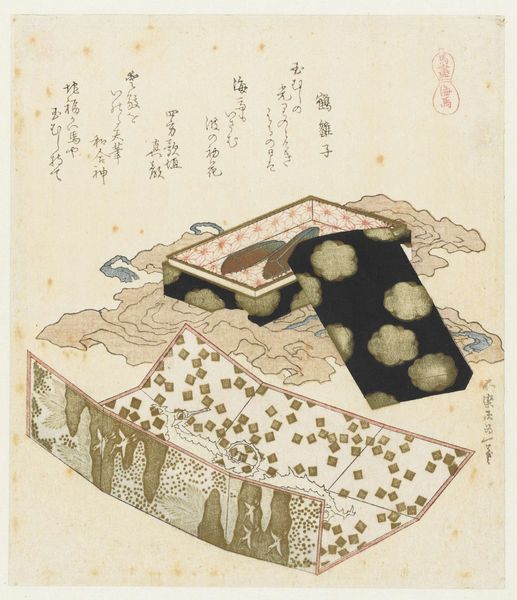
Dimensions: 5 1/2 x 6 15/16 in. (13.9 x 17.6 cm) (image, sheet)
Copyright: Public Domain
Editor: Here we have a woodblock print called "Box with a Comb" from around 1900. It's part of the Ukiyo-e tradition of Japanese art, and at first glance, it feels quite intimate and personal. How do you interpret this work? Curator: This print speaks volumes about the social history of beauty and adornment in Japan during that period. Consider the comb itself: it wasn't merely a tool but a highly valued object, often signifying social status, age, and marital status. Editor: So, the comb goes beyond its practical use. Curator: Precisely. In Ukiyo-e prints, the portrayal of everyday objects are rarely without intention. What might the presentation—the box, the cloth—suggest about the owner or the giver of this comb? Think about gender roles and expectations within the Japanese context at the time. Editor: It's presented almost like a precious gift. Is it intended for a woman of a certain social standing? Curator: The delicate presentation points towards that possibility. Also, notice the text. Whose voice do you imagine speaks through these words? Editor: It's poetic, but it doesn’t read as overtly romantic. Perhaps a message of respect, from a tradesman to their client? Curator: Perhaps. This piece really opens a conversation about the lives of women during this period and the subtle ways that power dynamics were negotiated, and identities constructed. Editor: This has broadened my view. I was initially focused on the visual aspect, now I see the cultural layers it embodies. Curator: Indeed! And remember, even an everyday object like a comb can be a potent symbol when we consider its place within social and historical structures.
